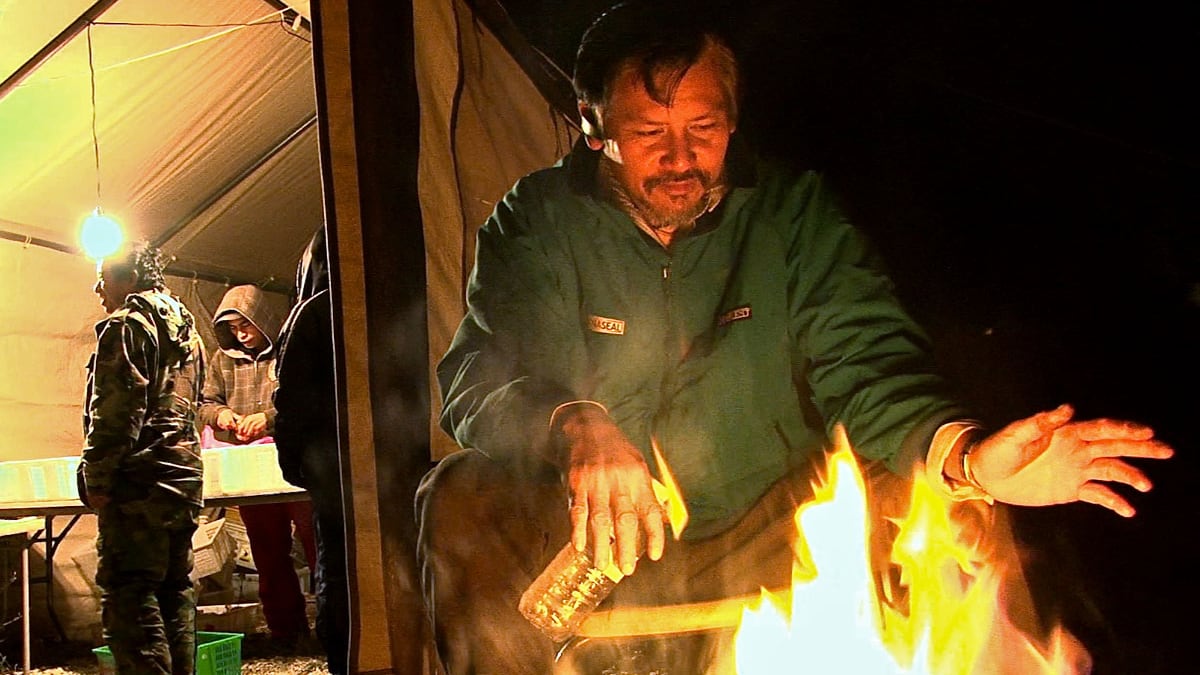The opening shots of The Last Season are deceivingly serene. Sara Dosa's 2014 documentary begins with a silhouetted hill just after sunset, an empty gas station surrounded by darkness, a burger joint with a few parked pickups out front. It's the dead of night in Chemult, an unincorporated town in Klamath County with a population that peaks around 300.
But the town's population is about to spike. For two months every year, Chemult transforms from near-ghost town to a thriving community of immigrants. Hundreds of pickers flock from Southeast Asia to gather matsutake mushrooms. It's a lucrative venture, especially since they sell in Japan for around $200 a pound. The pickers deliver their daily crop to makeshift camps, where the mushrooms are sorted and sold. Workers leave with pockets of cash.
Dosa, a San Francisco native, first heard about the industry while in grad school at the London School of Economics. But the money involved rarely makes its way onscreen. Instead, Dosa followed Kouy Loch, a Cambodian war veteran who works the mushroom circuit throughout the Northwest in order to provide for his daughter Janette. In the mid 2000s, Loch met Roger Higgins, a Vietnam War veteran and 40-year Chemult native living with his wife Theresa. Loch is now their adopted son, and lives in Higgins' backyard in a makeshift shack. Dosa filmed them for three months, documenting their relationship and the ways in which war—now decades in the past—continue to haunt them.
Higgins was near the end of his life during production. He walks with a cane and a nasal tube protruding from a backpack, the aftermath of a long battle with alcoholism. The damage his struggles have caused to him and Theresa makes up one of the film's major arcs. But Dosa handles the subject impressively from the onset, only occasionally hinting at Higgins' past before allowing Theresa and Loch to fully divulge it in the final act. Along the way, anecdotes regarding the horrors of war slowly make their way into the fold until his attitude—he calls himself "a real son of a bitch"—is given heartbreaking context.
Loch's story unfolds the same way. Dosa says his fear that Janette may never understand his absence was one of the reasons he agreed to be filmed. "Sometimes I can say that I'm lucky to have this job," Loch says. "Other times, I hate myself."
When Theresa asks Loch for advice to help comfort Higgins during his night terrors, his response is powerful and nearly poetic. "A flashback is just like a ghost coming into you," he whispers. "You have to explain to him…that nobody can hurt him anymore."
The bond between these people is palpable, especially near the film's ending. Credit Dosa, who works serene footage of the Oregon countryside into her film with grace. In fact, "serene" is a good way to describe the film in full. Dosa—who relied on her growing relationships with her subjects to drive the film's emotional power—favors intimacy over visual splendor.
It's also a tear-jerker. Higgins's ailing health is never exploited, but it's obvious that he's nearing his end. He passed away a year after production, and Last Season is dedicated to his memory. Dosa filmed him during the year he went sober, which she says may have contributed to his involvement. "I always the hunch that he saw the film as an opportunity to find a sense of redemption and reframe his story on his own terms," says Dosa.
SEE IT: Last Season screens at NW Documentary on Sunday, July 23. Free.

